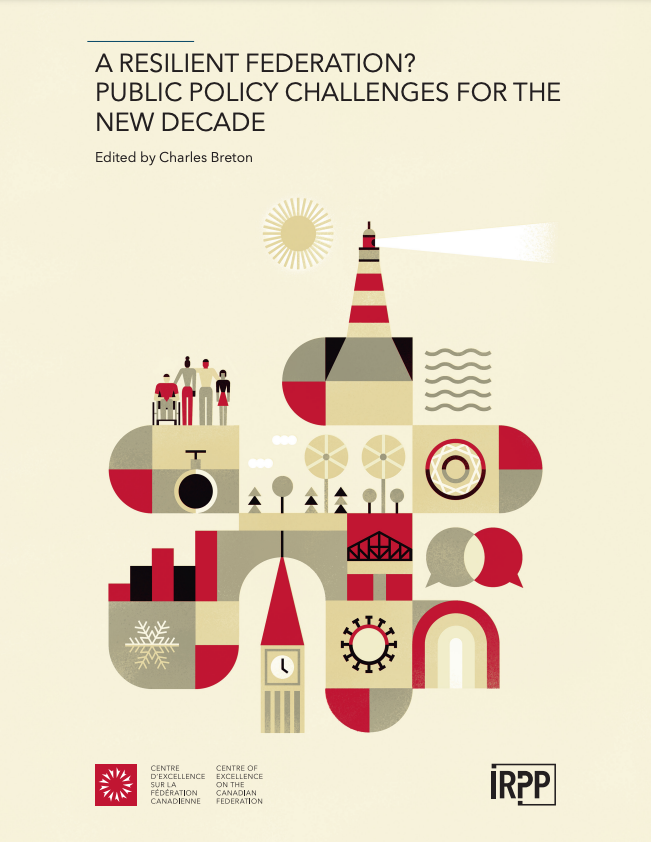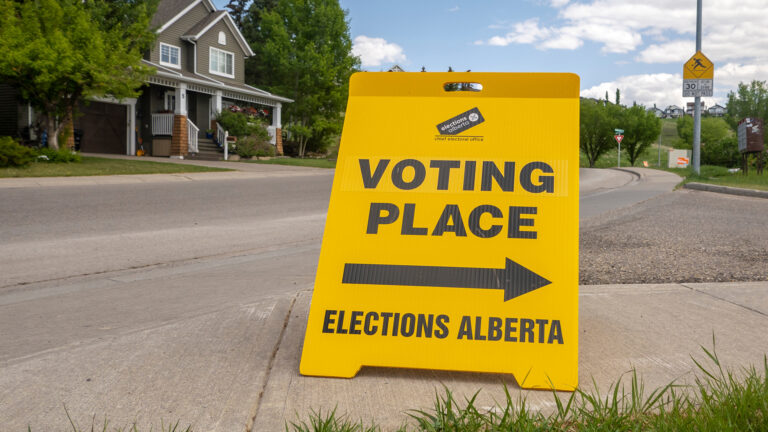Recognition and New Arrangements: The Challenges of a Multinational Federation
Introduction
Canada is a multinational federation made up of more than one nation, but it does not recognize itself as such. Quebec, the only French-speaking state in North America, has not signed the Constitution Act, 1982, and the process of reconciliation with Indigenous peoples has resulted in not much more than apologies and symbolic gestures.[1] As the majority of Canadians appears to be satisfied with this state of affairs, and political avenues toward change remain blocked, we may need to resign ourselves to this situation, even though it breeds distrust and makes all institutional reform difficult. Eventually, national minorities might also come to accept the status quo. But this logjam is not healthy. As the German sociologist Wolfgang Streeck observed, just because there is no solution in sight doesn’t mean we should not take the measure of the problem.[2] If we want to conceive of Canada as a resilient federation, we must acknowledge its failings and begin to contemplate possible solutions. There are many possible routes, but it is imperative that we start by recognizing the reality of internal nations, and then come to new arrangements with them. “Arrangement” is an apt word here, for it refers at once to an agreement with the other reached through concessions, and to a whole made up of many parts, such as a floral arrangement. Crafting a rich arrangement out of our differences is the existential challenge facing Canada.
A multinational federation that does not speak its name
Canada has never recognized itself as a multinational federation. Constitutionally, even democracy was not strongly entrenched; the main constitutive texts were largely silent on responsible government and parliamentary democracy, focusing instead on the prerogatives of the Crown.[3] In the Reference Re Secession of Quebec (1998), in which the Supreme Court explicitly introduces the democratic principle as a pillar of Canada’s constitutional order, legitimacy rests less on the will of the people than on respect for the Constitution.[4] The same applies to the peoples who made up the Canada of 1867. The Supreme Court refers to “different peoples” but does not name them, and hastens to add that, by forming a federation, those peoples agreed to merge into one nation.[5]
Beyond the constitutional texts, however, political factors have prevailed. As Université Laval law professor Patrick Taillon observes, “the silence of Canada’s constitutional texts has not prevented the development of effective democratic practices,”[6] through the gradual transformation of practices and customs into conventions. The same holds true, to some extent, for multinational federalism. While Indigenous peoples were excluded from the negotiations that led to the creation of the federation in 1867, and were reduced to “cultural minorities” in the 1998 Reference, their place in Canada’s constitutional order was already enshrined in various treaties recognizing their sovereignty. These treaties continued to develop and evolve under the new federation.[7] Similarly, the idea of a pact between two founding peoples was rejected from the outset in English Canada,[8] but the de facto balance of power between the two peoples had a lasting and tangible impact on the federation’s development. Without this balance of power, the convention of a constitutional veto for Quebec − which was observed until 1981 − would not have any rationale; official bilingualism would not have been adopted; and equalization payments might not exist.[9]
Canada, however, has failed to enshrine these relationships in law. With no formal recognition of its multinational character, the Canadian federation has had difficulty in finding arrangements that reflect its deep diversity.[10] Despite the talk about reconciliation with Indigenous peoples and land acknowledgements before public events, the negotiations on self-government, the provision of services and management of resources have not progressed much. To go further on these negotiations, hard issues about power, financial resources and natural resource development will have to be addressed.[11] In the case of Quebec, the Constitution Act, 1982 remains a significant obstacle to the very idea of recognizing the country’s deep-rooted diversity.
Multiple deadbolts
Political actors, scholars and observers agree that a constitutional reform of any significance is highly unlikely to occur. To begin with, the rules of the game are very exacting. If the governments had followed the rules they were preparing to entrench in law, the Constitution would not have been adopted.[12] To change the amending formula now, the provinces and the federal government must agree to it unanimously. After having substantially modified the constitutional order, the governments ensured its permanence by making the negotiations they had just conducted virtually impossible to replicate.
Politically, any attempt at constitutional reform is likely to launch wide-ranging negotiations involving a host of issues and a large number of actors, including Indigenous peoples. The bar for legitimacy would be high, as some provinces now require that any constitutional reform be put to a referendum.
It is therefore impossible to go back to the conditions that existed at the time of the Meech Lake Accord, when the intention was to agree on a limited number of concessions that would encourage the Quebec government to sign the Constitution. In fact, according to all experts, the Constitution can no longer be modified. It is, in the words of political scientist Kenneth McRoberts, “beyond repair.”[13]
It must be said that, with the exception of McRoberts and a few others, few people in English Canada are troubled by this. The Constitution Act, 1982 reflects the nationalism of the majority. Most Canadians can live with it, and they don’t see the need to recognize and accommodate the expectations of the country’s internal minority nations; that is, Quebec and Indigenous peoples.
Even with the rigidity it imposes, a constitution that cannot be amended appears to be a worthy trade-off. In the eyes of the majority, for example, if the Senate cannot be reformed, then this is the price to pay to maintain the status quo and the balance of power this unelected, ineffective second chamber embodies.[14]
Recognition and new arrangements
Twenty-five years after the 1995 referendum on sovereignty, which was supposed to break the deadlock, the government of Quebec has yet to find a formula that would enable it to move forward in a satisfying way. In 2001, Liberal MNA Benoît Pelletier, who became Quebec’s minister of Canadian intergovernmental affairs, published a report that provided Jean Charest’s government with a course of action. In 2017, the government of Philippe Couillard produced its own Quebec affirmation policy, entitled Quebecers – Our Way of Being Canadian.[15] These two documents broadly restated and updated the demands made in the negotiations on the Meech Lake Accord. But they did not have much to propose as solutions that would remove the formidable political and institutional barriers preventing constitutional reform. The Charest government awkwardly conveyed the need to wait until the time was ripe for change; Couillard’s government cautiously confined itself to expressing a preference for an open conversation among Canadians.
In fact, the conversation never started. Prime Minister Justin Trudeau dismissed the idea of discussing the Quebec affirmation policy even before he had seen it. Seven of the thirteen provincial and territorial premiers did not even bother to react to the policy, which was discussed mostly in the Quebec media.[16] Social scientists and legal scholars do not necessarily have more answers to confront this political impasse. In Quebec there is a rich school of thought on diversity that is grappling with the challenge of imagining a multinational federalism that could come to arrangements with its internal nations.[17] This school has made a significant contribution to the analysis of the normative and comparative foundations of multinational federalism, and it clearly informs Quebec’s affirmation policy. But at the end of the day, it has little to say about how to confront what Université du Québec à Montréal political science professor Alain-G. Gagnon calls “the might makes right principle.”[18] In Canada — as in Spain — it is precisely the force of might that stands in the way of multinational federalism.
In a rare essay on the subject, legal scholar Dave Guénette explores the few paths that are still open “to steer Canada toward a structure that is more consistent with its multinational character.”[19] He identifies two possibilities, the unilateral and the bilateral approaches, thus avoiding the multilateral process, which Peter Russell describes as “virtually unusable.”[20]
The unilateral approach would compel consideration of an issue by holding a referendum on a constitutional question, citing the obligation to negotiate recognized by the Supreme Court in the Reference Re Secession of Quebec. Another option here, which is in fact the only option for Indigenous peoples, would be to resort to the courts.[21] Both of these unilateral options have obvious limitations. The obligation to negotiate leads directly to the multilateral track. Going to the courts could result in an expansion of rights, but it also entails the risk of strengthening a status quo that is unfavourable to the true recognition of internal nations.
The bilateral approach would take advantage of the possibility recognized in section 43 of the Constitution Act, 1982, of amending, by agreement between the federal government and a province, a constitutional provision that concerns that province. By using this process regularly, a province could increase the asymmetry in the federation. Bilateral intergovernmental agreements could also serve this purpose, although their legal status is more precarious.[22] Similarly, Indigenous peoples could attempt to win recognition of their claims by negotiating new treaties.
Because it does not necessarily lead back to a multilateral process, the bilateral approach appears more promising. The possibility of intergovernmental or treaty agreements, in particular, holds greater hope for circumventing the rigidity of the constitutional framework. Guénette is concerned that such agreements, which can always be rescinded, are more fragile. This is a legitimate concern, but it should not be overstated. The final Canada-Quebec agreement on the Quebec Parental Insurance Plan, signed in February 2005, is an example. After lengthy negotiations, this bilateral agreement introduced substantial asymmetry into social policy by allowing Quebec to keep Employment Insurance funds for parental leave and use them to create its own parental leave plan, which is more generous and better meets the expectations of civil society and parents.[23] Legally, nothing prevents a return to the status quo ante in the event of a disagreement. Institutional logic, however, makes such backtracking highly unlikely. Once established, new social programs might change around the edges, but they are rarely dismantled.
Another option, which Guénette does not consider, is to take the unilateral route without any constitutional expectations. Somewhat like the bilateral approach, this approach seeks to move forward without waiting to affirm the prerogatives and distinct character of an internal nation. If, for example, Quebec opted for proportional representation, and thus a new system of government, this would represent a strong assertion of its national character. In a country that is allergic to major political reforms, Quebec would be charting its own long-term course, without resorting to negotiations and constitutional amendments. By following its own path, Quebec would force its partners in the Canadian federation to recognize and come to terms with its distinct character.
Conclusion
Canada is undeniably a multinational federation. Its history only makes sense when it is read in light of the recurring need to come to arrangements that satisfy its constituent nations.[24] But this fact is not recognized, either constitutionally or politically. Canada still thinks of itself as a one-nation state and, leaving nothing to chance, it has installed a multitude of barriers to prevent any challenge to the constitutional status quo. This policy of denial breeds distrust and prevents constitutional modifications of any significance. There seem to be few ways out, as the Quebec government, Indigenous communities and scholars have shown as they search for a solution. Under the circumstances, it will be up to the minority nations to take the lead and affirm their visions and prerogatives, in order to force the majority to recognize them and address their expectations. The results would probably be modest and fall short of what is required, but there is no other way. As I stressed in the introduction, the fact that a satisfactory solution appears improbable should not prevent us from recognizing and addressing the problem.
[1] P.H. Russell, Canada’s Odyssey: A Country Based on Incomplete Conquests (Toronto: University of Toronto Press, 2017).
[2] W. Streeck, Buying Time: The Delayed Crisis of Democratic Capitalism (London: Verso, 2014), viii.
[3] P. Taillon, “Une démocratie sans peuple, sans majorité et sans histoire: de la démocratie par le peuple à la démocratie par la Constitution,” in Ré-imaginer le Canada : vers un État multinational?, ed. F. Mathieu and D. Guénette (Quebec City: Presses de l’Université Laval, 2019), 145-146.
[4] Taillon, “Une démocratie sans peuple, sans majorité et sans histoire,” 153.
[5] Taillon, “Une démocratie sans peuple, sans majorité et sans histoire,” 163.
[6] Taillon, “Une démocratie sans peuple, sans majorité et sans histoire,” 148-149.
[7] M. Papillon, “Les traités avec les peuples autochtones : un 5e pilier de l’ordre constitutionnel canadien ?” in Ré-imaginer le Canada : vers un État multinational?, ed. F. Mathieu and D. Guénette (Quebec City: Presses de l’Université Laval, 2019).
[8] A.I. Silver, The French-Canadian Idea of Federation, second edition (Toronto: University of Toronto Press, 1997).
[9] H. Rioux Ouimet, “Quebec and Canadian Fiscal Federalism: From Tremblay to Séguin and Beyond,” Canadian Journal of Political Science 47, no. 1 (2014): 57-58; D. Béland, A. Lecours, G.P. Marchildon, H. Mou and M.R. Olfert, Fiscal Federalism and Equalization Policy in Canada (Toronto: University of Toronto Press, 2017), 18.
[10] A.-G. Gagnon, “La valeur de la diversité au sein des démocraties libérales avancées : un monde qui nécessite des repères renouvelés,” in Ré-imaginer le Canada : vers un État multinational?, ed. F. Mathieu and D. Guénette (Quebec City: Presses de l’Université Laval, 2019).
[11] Russell, Canada’s Odyssey, 438-439.
[12] P. Taillon, “Les obstacles juridiques à une réforme du fédéralisme,” Cahier de recherche, Institut de recherche sur le Québec (2007), 9.
[13] K. McRoberts, Misconceiving Canada: The Struggle for National Unity, second edition (Don Mills: Oxford University Press, 2019), 358.
[14] McRoberts, Misconceiving Canada, 359; A. Noël, Utopies provisoires : essais de politique sociale (Montreal: Québec Amérique, 2019), 205.
[15] Gouvernement du Québec, Quebecers – Our Way of Being Canadian: Policy on Québec Affirmation and Canadian Relations (Quebec City: Secrétariat aux affaires intergouvernementales canadiennes, 2017).
[16] McRoberts, Misconceiving Canada, 364.
[17] Gagnon, “La valeur de la diversité au sein des démocraties libérales avancées,” 30.
[18] A.-G. Gagnon, La raison du plus fort: plaidoyer pour le fédéralisme multinational (Montreal: Québec Amérique, 2008).
[19] D. Guénette, “D’ambiguïté et d’opportunités : le constitutionnalisme et les tensions nationales au Canada,” in Ré-imaginer le Canada : vers un État multinational ?, ed. F. Mathieu and D. Guénette (Quebec City: Presses de l’Université Laval, 2019), 304.
[20] Russell, Canada’s Odyssey, 425.
[21] Guénette, “D’ambiguïté et d’opportunités,” 304-305.
[22] Guénette, “D’ambiguïté et d’opportunités,” 308-309.
[23] A. Noël, “Asymmetry at Work: Quebec’s Distinct Implementation of Programs for the Unemployed,” in Making EI Work, ed. K. Banting and J. Medow (Montreal and Kingston: McGill-Queen’s University Press, 2012).
[24] Russell, Canada’s Odyssey, 16; McRoberts, Misconceiving Canada, 360.
This essay was published as part of the inaugural essay series for the Centre of Excellence on the Canadian Federation, under the direction of Charles Breton. Editorial coordination was done by Francesca Worrall, proofreading by Zofia Laubitz, production and layout by Chantal Létourneau and Anne Tremblay.
This essay was translated from French by John Detre. It is also available in French under its original title: Reconnaître et composer : les défis d’une fédération multinationale. The original version was copy-edited and proofread by Étienne Tremblay.
Alain Noël is professor of political science at the Université de Montréal. He works on social policy from a comparative perspective, as well as on federalism and on Quebec and Canadian politics. Between 2006 and 2014, he was president of the Centre d’étude sur la pauvreté et l’exclusion of the Quebec government (CEPE). His latest book is entitled Utopies provisoires : essais de politique sociale (Québec Amérique, 2019).
To cite this document:
Noël, Alain. 2020. Recognition and New Arrangements: The Challenges of a Multinational Federation, Essay no. 2, Montreal, Institute for Research on Public Policy.











